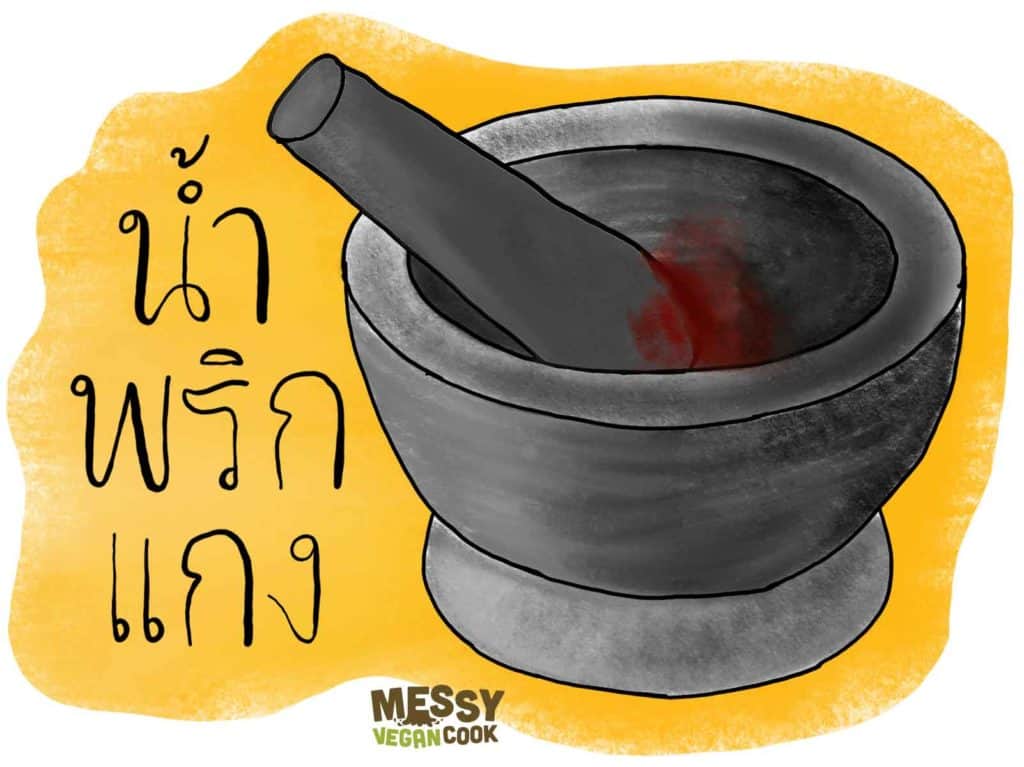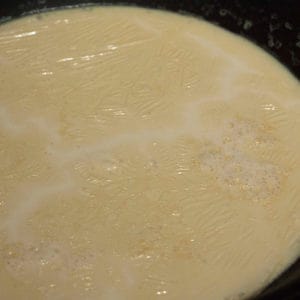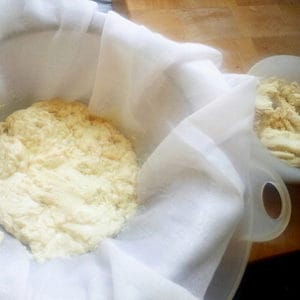
I’ve written briefly about Thai curry pastes in various posts on this site and have considered in the years since how to present a concise but accurate summary of such a substantial topic. Credit where credit is due: High Heel Gourmet (warning: there are many pictures of meat), more than any other resource I have found (I own dozens of Thai cookbooks in both English and Thai, and have spent many a day immersed in Thai food materials at the British Library, so no one can say I’ve not looked), breaks Thai curry down in a manageable way that doesn’t treat its readers like morons. I have borrowed heavily from her method of explanation. I'll try to mention all the curry pastes non Thais are most likely to be familiar with, plus a few additional curry pastes to explain some peripheral concepts.
The summaries I’ve written are not hard and fast rules. There are plenty of cooks who will do things differently. This is also not a comprehensive guide to Thai curry pastes. Entire books have been written on the subject of Thai curry, so I am hardly going to cover everything in a single blog post.
What is a curry paste?
In Thai terms, a curry paste is a pounded blend of aromatics with the possible addition of spices, intended to be fried or boiled to create a cooked dish.
A discussion of curry paste by colour alone hems in the imagination and encourages limited thinking about a topic that is in reality monumental. Many people understand Thai curry pastes to exist as a triumvirate rainbow of green, yellow, and red. This isn't entirely untrue, but equally this explanation ignores a lot of detail. For instance yellow curry paste is actually a red curry paste. Further, the range of red curry pastes is vast. High Heel Gourmet impresses the importance of learning red curry pastes by their names because to vaguely catalogue them all as red is like referring to every tomato-based Italian sauce as marinara.
The difference between red and green curry paste
For those who want to know the difference between green and red curry paste the answer is simple. Whether a curry paste is designated green or red is down to one ingredient only: the chilli. If the paste uses green chilli, it is a green curry paste. If it uses red chillies, it is a red curry paste. Since most curry paste uses red chillies, the majority of curry pastes are red. Some curry pastes, such as for kaeng liang, might not include chillies, which I am sure was deliberate just to make this topic a little less clear.
Green curry paste
Prik kaeng keow wan
พริกแกงเขียวหวาน
Keow (kiao, kiew, kiaw and a million other transliterated versions of the word) means green while wan means sweet, but the curry paste itself is not sweet. Whether sugar is added to the curry is up to personal preferences. Unlike with red curry pastes, green curry paste is only made with fresh chillies. Whether those chillies are fire bombs or mildly spicy is up to personal preference. Southern variations may include turmeric.
Red curry pastes
Prik kaeng kua พริกแกงคั่ว
The foundation for other red curry pastes, you can find the ingredients in prik kaeng kua present in all standard red curry pastes. This curry paste lacks dried spices but includes dried chillies, galangal, lemongrass, garlic, shallot, and shrimp paste (kapi). Makrut lime peel and coriander root will usually also be included. All of the curry pastes below, unless otherwise noted, include the ingredients of prik kaeng kua.
This curry paste forms the base of many a Thai recipe, including the sweet curry stir fried dish pad prik king; the curry custard that is hor mok; and kaeng tae po, a sweet and sour coconut curry.
Prik kaeng choo chee พริกแกงฉู่ฉี่
This curry paste is similar to prik kaeng kua. Sometimes the ingredients are the same. They may also include white peppercorns. High Heel Gourmet says prik kaeng choo chee traditionally includes toasted coconut, though recipes in many Thai and English cookbooks I have do not include this.
Prik kaeng pet
พริกแกงเผ็ด
This is effectively kaeng kua with a few additional spices, typically cumin, coriander seeds and white peppercorns. Prik kaeng kua and prik kaeng pet are probably the most familiar of the red curry pastes, the ones you are likely to buy premade in supermarkets.
Prik kaeng panang
พริกแกงพะแนง
Prik kaeng panang (not Penang, which is the name of a Malaysian island) includes peanuts in the curry paste. I have seen some recipes recipes that include toasted spices like cumin and coriander seeds, but what sets this red curry paste apart is the addition of peanuts.
Prik kaeng karee
พริกแกงกะหรี่
Otherwise known as yellow curry paste, I think many would be surprised to find prik kaeng karee listed as a red curry paste. Remember when I said the difference between red and green curry paste is the colour of the chillies used? Yellow curry paste includes dried red curries in the paste, as well as turmeric, and hence the resulting colour shown by the curry. Kaeng karee is an Indian influenced curry that translates as “curry curry,” where kaeng is a reference to Thai style curry and karee to the Anglo-Indian word for curry. The Indian mark is seen with the addition of more dried spices, which can include fennel, mace, curry powder, and cardamom (among others). This curry paste also includes ginger.
Prik kaeng massaman
พริกแกงมัสมั่น
Kaeng massaman is a curry of Muslim origin, either by Persian traders or within Muslim Thai society domestically. The curry paste marries Thai ingredients like lemongrass and shrimp paste with plenty of heady dried spices (like cumin, coriander, nutmeg, mace, cardamom, cinnamon, cloves).
Sidebar: Some Southern Muslim Thai recipes for massaman curry I have seen use only dried spices, with no curry paste base.
Prik kaeng kua kling
พริกแกงคั่วกลิ้ง
This is a fiery Southern curry paste with lots of turmeric that can include both fresh and dried chillies. Black peppercorns are more commonly used than white. It is often quite lemongrass-heavy. This paste is used in a dry curry, one that is stir-fried without the addition of coconut milk or water.
Prik kaeng som / lueang
พริกแกงส้ม / เหลือง
I lump prik kaeng som and prik kaeng luang together since they are regional variants of the same style of curry paste. The pastes include, at a minimum, fresh and/or dried chillies (of an incendiary variety), shrimp paste, salt, and shallots. Garlic and/or krachai (Chinese keys/fingerroot) and/or makrut lime zest are frequently included. Prik kaeng lueang is the Southern version and includes turmeric root and sometimes lemongrass.
Prik kaeng pa
พริกแกงป่า
Otherwise known as jungle curry paste, prik kaeng pa (the word pa means jungle) is not dissimilar to prik kaeng pet in composition, but the curry paste is boiled instead of fried. Hotter dried chillies may also be favoured over the typically less hot long dried chillies put to use in milder red curry pastes. Some cooks include fresh chillies in the paste.
Prik kaeng hunglay
พริกแกงฮังเล
This curry paste lays the groundwork for what is arguably Northern Thailand's most well known curry. This Indian-via-Myanmar-to-Thailand curry paste employs the usual ingredients in kaeng kua, but with the addition of a masala spice blend. The curry paste can sometimes include ginger, but it is more usual to add ginger to the curry itself.
Prik kaeng tai pla
พริกแกงไตปลา
This Southern curry paste is designed for a curry made with tai pla, or fermented fish entrails. I include it because there is a vegan version (just as there is a vegan shrimp paste). Black peppercorns are favoured here, as in many Southern pastes, and as with other curry pastes from this region there is of course also fresh turmeric added. Prik kaeng tai pla might use only small, spicy, dried bird's eye chillies or a combination of dried and fresh.
Prik kaeng khao soi
พริกข้าวซอย
Prik khao soi is the base of the famous Northern Thai curry noodle dish. Khao soi is Muslim Chinese dish with origins in Yunnan province, so aromatics like black cardamom and ginger are included. Turmeric appears in the paste and/or in the curry soup. Curry powder is another popular ingredient, though were you to purchase a bowl from a Muslim Thai vendor it would likely be devoid of this blended spice.
Curry paste outliers
Prik kaeng liang
พริกแกงเลียง
This curry paste, the base for a popular Thai vegetable soup (still considered a curry because there is a paste), is quite simple. Shallots, white peppercorns, and krachai are typical, but garlic, shrimp paste, and chillies are often present. Dried or fresh cooked fish are often added, but vegan versions use mushrooms. Chillies are not always included, making prik kaeng liang less straightforward to categorise.
Prik pad cha
พริกผัดฉ่า
Many Thai dishes that are not curries utilise a sort of paste in the cooking process. I think it's worth talking about this given the often stated distinguishing factor between Thai soups and curries is the latter typically contains a paste. An example of a dish that uses a paste that isn't a curry paste is pad cha. At the very simplest, fresh chillies and garlic would be pounded into a rough paste (sometimes with additional ingredients like white peppercorns and coriander root). I use only pounded garlic and chillies in my pad cha, but other recipes call for aromatics like galangal and lemongrass too.
Curry pastes with ginger
You might find recipes written by bloggers (and sometimes even published authors with cookbooks) who call for ginger in Thai curry pastes as a substitute for galangal. While not an acceptable alternative (and IMO a way to gauge how little someone has delved into understanding Thai cuisine – if I saw someone call for this substitute I would not take them seriously as a food writer), there are a handful of curry pastes with heavy foreign influence that do include ginger in the blend.
- Yellow curry paste – prik kaeng karee
- Khao soi curry paste – prik kaeng khao soi
- Burmese Thai curry paste – prik kaeng hunglay (sometimes)
Curry pastes that don't keep well
These curry pastes utilise fresh chillies in their makeup. They are best consumed within a few days of making because beyond that the freshness imparted by the chillies is lost. Recipes for some of these curry pastes can vary. I have seen plenty of jungle curry pastes without fresh chillies for instance, but some people do include them.
- Sour curry paste – prik kaeng som
- Southern sour curry paste – prik kaeng lueang
- Green curry paste - prik kaeng keow wan
- Paste for Southern dry curry – prik kaeng kua kling
- Southern fermented fish curry paste – prik kaeng tai pla (sometimes)
- Jungle curry paste – prik kaeng pa (sometimes)
Personal notes
I have been thinking for years about how to organise curry pastes into neat categories. After all, such grouping practices slice through grey area to make a topic digestible to non-experts and that’s partly my goal. Understanding the basics lays the framework for not just learning further degrees of material, but for understanding how the information interconnects.
But Thai curry is a colossal topic. Were every curry recipe through time – all the modifications over generations due to preference, shortages, and surpluses – to be written down and thrown into the Yarlung Tsangpo Canyon, I am confident there would be an overflow.
The more I study, the more I fight information myopia, the more I see I will never in a trillion years know every Thai curry. An aside: what I do know is my fight against 24 hour experts, the bloggers and influencers who demand (and receive) praise for the knowledge they have done little or no work to hone, will be to continue studying.
A note on transliteration
If you ever wondered why the Thai word for curry is sometimes spelled kaeng and other times written as gaeng, this is down to confused transliteration rules. The ก in แกง is a 'g' sound, but the pronunciation of this sound is more like a 'k' sound. Most systems designed to render Thai words in English state a rule that any word beginning with this character should be written with a k, but much of the time we write it with a g anyway. Clear as mud, I know. Just realise gaeng and kaeng are the same thing.




Constanze
Oh, wo. I just learned a lot here. Thanks, Kip!
Kip
You're most welcome! Thanks for reading <3
Eileen Thai
Hello!
I found this page while googling the difference between green curry and prik King curry pastes I'm ashamed to say I did not know all the differences of the curry pastes. Having family with Thai restaurants and coming from Malaysia, I am a fan of curries and know the spices behind it. You did an excellent job on the difference, and so detailed!
Malaysian curries are usually cooked with coconut milk. It was my first time cooking with the Thai Maesri brand of Prik Khing curry; it tasted like the Malaysia sambal recipes.
Kip
Thank you! I think it is a complicated topic with a lot of grey area and overlap, but my goal was to show there are more than three types of curry. Interesting point about that Maesri paste tasting like some sambal. I'm not very familiar with Malaysian cuisine so that would have never crossed my mind.
Eileen Thai
Many interesting recipes here. I will definitely be reading more and making dishes for my vegan friends!
Rebecca
Thank you for this information. I love cooking Thai food. I had a delicious red curry paste but wanted to make Khao Soi and in a rush so I just added ginger and black cardamon. It tasted heavenly.
Kip
You're most welcome (and I've been known to make a quick khao soi the same way)
I reserve the right to improve malicious and trollish comments.